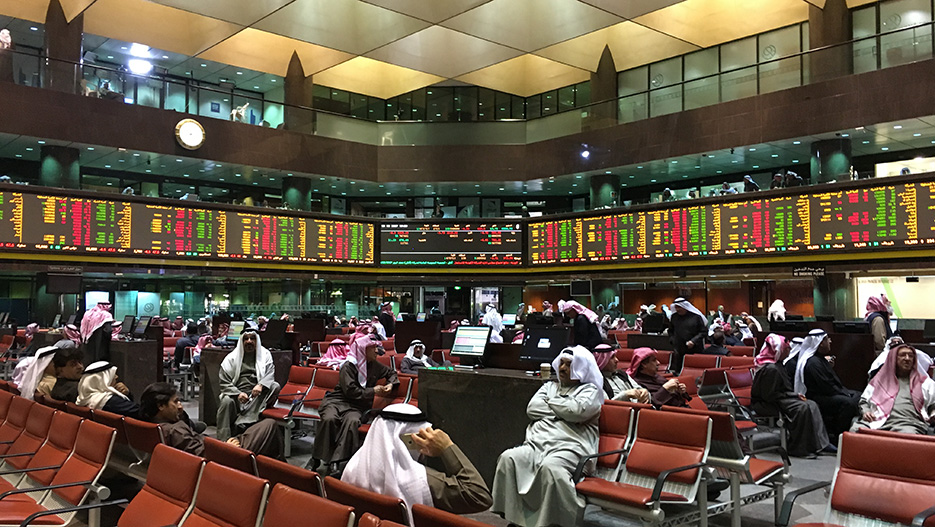Kuwait Financial Outlook: Is Kuwait Prone to Become a Financial Centre?
So whilst the effects of declining oil revenues have been considerable, Kuwait, which boasts large fiscal reserves accumulated over the past few decades, has been able to stave off the precipitous corrections that have hit some other petro-states in recent years.

Kuwait, March 2017
The history of Kuwait’s economy has been one intimately intertwined with oil. Once a regional entrepot for pearl diving and fishing, the country was historically a vital part of regional Gulf trade networks interlinked to those of the Indian Ocean. Political independence in 1961, along with its huge hydrocarbon resources, enabled Kuwait to become one of the top oil producers in the world. Yet, successive authorities have been acutely aware that crude is a finite resource, a fact brought into stark relief during the recent period of low oil prices.
By mid-2016 however the period of slow economic growth and sharply falling government revenues that have buffeted the Gulf Cooperation Council (GCC) members since 2014 was widely thought to have reached an inflection point. Kuwait, in common with its neighbours, experienced a sharp contraction in 2014 and 2015 has now been projected by the World Bank to have a GDP growth rate of 1.6% in 2017, and to pick up by 3.5-4% in the medium term, supported by government investment in infrastructure and an upswing in private investment. While the National Bank of Kuwait (NBK) is forecasting real GDP rising to 2.5% in 2017, on the back of robust public expenditure and a steady growth in domestic consumption.
Indeed, the impact of cheap oil on Kuwait over the past three years has in many respects transformed the country’s economic landscape. With the economic development blueprint “Kuwait vision 2035” drawing on the country’s trading past in order to secure its future, this blueprint aims to re-kindle Kuwait’s history as a commercial centre, while also developing sectors such as finance and real estate to make them even more competitive internationally.
This plan also focuses on further integrating the private sector into areas of the economy traditionally under state control and aims to raise the non-oil sector’s GDP contribution to 64% in 2015-20, up from an average of 45.1% in 2013-14.
As the former Finance Minister, Bader Al Humaidhi put it to us, “We are a country, we are not like human beings; human beings live 60, 70 or 100 years; Kuwait has been here for three hundred years and hopefully will be here forever. What if after 10 or 20 years we run out of money? What will happen then? We have to look at were can derive other sources of income.”
“What if after 10 or 20 years we run out of money? What will happen then? We have to look at were can derive other sources of income.”
So whilst the effects of declining oil revenues have been considerable, Kuwait, which boasts large fiscal reserves accumulated over the past few decades, has been able to stave off the precipitous corrections that have hit some other petro-states in recent years. With Kuwait taking decisive action not to rely on it’s financial reserves and to offset the lost hydrocarbon revenue. Instead, the government has announced a range of expenditure cuts and initiatives aimed at developing new revenue streams in the non-oil industries as part of what is widely considered to be an intensification of the state’s long-running economic diversification strategy.
In the short term, this effort is manifest in the form of a rising budget deficit. The government’s 2016/17 budget, includes a deficit nearly 50% higher that the previous year’s. Ensuring that this deficit growth is reversed will require the state to cut costs and raise revenues considerably over the remainder of 2017 and first quarter of 2018.
Faisal Sarkhou, CEO of a leading local capital markets player KAMCO, stressed: “Kuwait must reform the economy, moving away from the public sector and into the private sector, as well as moving away from an oil based economy to a more diverse economy that can attract foreign direct investment.”
Looking ahead Kuwait plans to institute a sales tax, the first of its kind in the region, by 2018. Whilst the nation has plans to tap international capital markets and the private sector to pay for new infrastructure projects. The Government has also ramped up its efforts to carry out new projects on a public-private partnership (PPP) basis, with the Kuwait Authority of Partnership Projects overseeing a KD6Bbn ($19.8bn) PPP program as of early 2017.
Sarkhou was adamant: “The country has been lagging on infrastructure spending for many years. There is a pressing need for investment in infrastructure spending to renovate the countries, education system and health care system. In 1990, Kuwait had a population of less than one million people. Twenty-six years later, the population has increased fourfold and this comes with added challenges because you must revamp the efficiency of the government.”
Thus the state also plans to maintain its substantial capital expenditures, which are seen as critical to supporting economic growth in the near term. Although the plans have yet to be fully implemented, they have contributed to a steadily improving outlook for the country.
Looking further ahead, the on-going and continued emphasis on the development of the non-oil sector is projected to become a key factor influencing Kuwait’s prospects. Indeed, recent research by the NBK forecasts non-oil GDP growth of 4.5% and 5% in 2017 and 2018 respectively, double the institutions real GDP growth projection for those years. With rising levels of consumption and private investment also positively influencing factors in the Kuwaiti economy’s outlook.
As a result, Kuwait is facing the oil price shock from a position of strength.
FAIR USE POLICY
This material (including media content) may not be published, broadcasted, rewritten, or redistributed. However, linking directly to the page (including the source, i.e. Marcopolis.net) is permitted and encouraged.